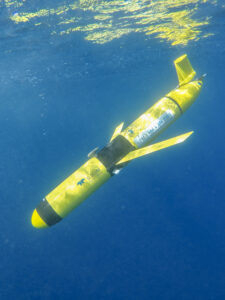Published on: March 19, 2022
OCEAN GLIDER
OCEAN GLIDER
NEWS
India has plans to introduce eight deep ocean to strengthen the capacity of observations in the Indian Ocean as part of its ‘Deep Ocean Mission’.
DETAILS

WHAT ARE OCEAN GLIDERS
- Autonomous, unmanned underwater vehicle used for ocean science
- Require little or no human assistance while traveling
- Uniquely suited for collecting data in remote locations, safely
- Relatively low cost
- May be equipped with a wide variety of sensors
- Monitor temperature, salinity, currents, and other ocean conditions
- Information creates a more complete picture of what is happening in the ocean, as well as trends
WHAT TYPE OF GLIDERS ARE PROPOSED
- Having 6-12 months endurance
- Able to Travel from 3,000 km to 4,500 km
- About 48 deep Argo floats at 6,000-metre depth at 24 locations and another 150 wave drifters
WHAT IS DEEP OCEAN MISSION
- Undertaken by the National Institute of Ocean Technology (NIOT)
- Under Ministry of Earth Sciences
- Approved in 2021
- India’s first unique manned ocean mission
- Aims to send men into the deep sea in a submersible vehicle for deep-sea ocean exploration and mining of rare minerals
- Resources such as polymetallic manganese nodules, Gas hydrates, hydrothermal sulfides, and cobalt crusts will be explored which are usually located at a depth between 1000 to 5500 meters.
- India has been allocated a site of 75,000sq km in the Central Indian Ocean Basin by the International Sea Bed Authority (ISA) for the exploration of polymetallic nodules from the seabed in a 15-year contract.
- The estimated resource potential of polymetallic nodules is 380 million tonnes through preliminary studies. Major components in these nodules are manganese, nickel, copper, and cobalt.

